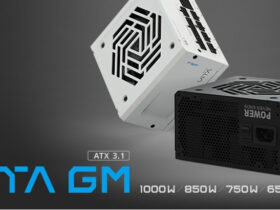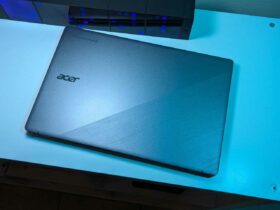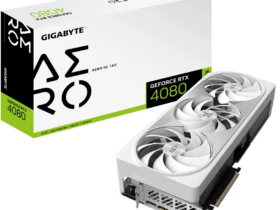Are you looking for the perfect notebook that meets all your needs and offers you an optimal user experience? Let’s find out some tips!
With the ever-evolving laptop market and the wide variety of options available, choosing the right laptop can seem like a daunting task. However, with careful planning and a clear understanding of your needs, you can find the perfect notebook that fits your lifestyle and day-to-day activities.
What characteristics must a computer have to be good?
When looking for a quality computer, it is essential to understand the characteristics that make it a good device. Several variables come into play, such as processing power, storage capacity, screen quality, and more.
CPU
When it comes to choosing a notebook, a key element to consider is the CPU, which represents the beating heart and brain of the device, as well as being primarily responsible for performance. Currently among the various manufacturers of CPUs for notebooks, the best known are Intel and AMD, both of which are able to satisfy the needs of every user. Let’s see them in detail:
- Intel CPUs: Intel CPUs are known as Intel Core and are divided into Low Power Intel Core CPUs and High Performance Intel Core CPUs. You can identify these subcategories by looking at the letter at the end of the number indicating the chip model. The letters U and P indicate low consumption solutions, while the letter H identifies high performance solutions. The numbers indicate performance on an increasing scale.
- AMD CPUs: The division of AMD CPUs is similar to that of Intel alternatives. Here too there are low-power CPUs identified by the letter U and high-performance CPUs that are distinguished by the letter H. The main difference lies in the name, AMD Ryzen. Even within these two categories, we have further subdivisions based on numbers.
Low-power CPUs are able to offer excellent performance and are the best choice for most users who use their notebook for common tasks such as browsing, consulting documents, managing emails, word processing, creating presentations and spreadsheets of calculation.
If, on the other hand, your routine includes more complex tasks such as multimedia content creation, professional programming, 3D modeling, rendering and large file conversion, then it is advisable to opt for a solution with an H.
RAM
Speaking of RAM memory, we can define it as the short-term memory of the system, capable of making all the necessary data available instantly, including those relating to the processes in progress and the most used applications. Currently, it’s rare to find notebooks with slow RAM, as even older modules are more than enough to meet the needs of most users.
However, it’s easier to make mistakes about how much RAM you need. Our advice is not to go below 8 GB of RAM, considering the weight of the operating system and many software. Nowadays, this parameter is essential to ensure a product that is even minimally “future-proof”. On the other hand, if your routine involves the use of applications that require a significant amount of RAM, such as editing, design or modeling software, it is advisable to switch to a minimum of 16GB of RAM.
Graphic card
Another extremely important, and sometimes critical, component is the GPU (Graphics Processing Unit). Indeed, the GPU takes care of the graphic calculation and is present in every system. It can be integrated or dedicated.
Integrated graphics cards are so called because they are integrated directly into the same chip as the CPU. In recent years, the performance of integrated graphics cards has improved significantly, but they are better suited to handling common processes. They are not yet powerful enough to tackle some types of activities: operations such as 3D modeling, animation, video editing, professional color correction, real-time rendering and of course gaming, benefit significantly from the presence of a dedicated GPU.
What is the best computer operating system?
Let’s start by saying that the best answer depends on your needs.
One of the most popular choices is Windows, which dominates the market with a significant presence on more than three-quarters of computers. The flexibility of Windows and its compatibility with a wide range of devices are key factors in its success. Furthermore, the Microsoft Office package, with programs such as Word and Excel, has contributed to the diffusion of this system.
On the other hand, Apple’s MacOS is considered a “cool” operating system and differs from Windows in its philosophy and its close relationship with Apple’s hardware. The fluidity of use, the minimum presence of lag, security from viruses and the perfect ecosystem with other Apple devices are the strengths of MacOS. However, it is important to check the compatibility of various peripherals with Mac.
A “democratic” alternative to Windows and MacOS is represented by Ubuntu, a free and open-source operating system based on Linux. Ubuntu offers a wide range of applications, such as the free Libre Office suite, and is known for its stability, security, and light weight. It is particularly suitable for educational and public settings, reducing licensing and hardware costs. However, the program ecosystem and peripheral compatibility may be more limited than for Windows and MacOS.
How to improve notebook performance?
If you want to make your laptop faster, here are some tips to optimize performance:
- it starts by cleaning up your hard drive, deleting unnecessary files and deleting temporary files, as well as emptying the Recycle Bin. Every time you surf the Internet, temporary files are created and take up space on your disk. Deleting these files will free up storage space.
- Computers often come with pre-installed programs and applications that you may not be aware of. Removing these programs will free up disk space and make it faster for the system to retrieve files.
- Also, many computers automatically launch background programs that you may not need. Disabling the automatic launch of such programs can help improve performance.
- If your laptop has a traditional hard drive (HDD), consider replacing it with a solid-state drive (SSD). SSDs use flash memory to allow your computer to access files faster, making everyday tasks up to six times faster. SSDs are also more durable and use less power, making them an ideal choice for laptops.
- Finally, check the amount of RAM memory installed on your computer. If your laptop has insufficient RAM, it may struggle to handle even the simplest tasks. Consider whether your computer could benefit from adding more RAM memory to improve overall performance.
By following these tips, you can get the most out of your laptop and make its performance smoother and faster.
















Leave a Reply
View Comments